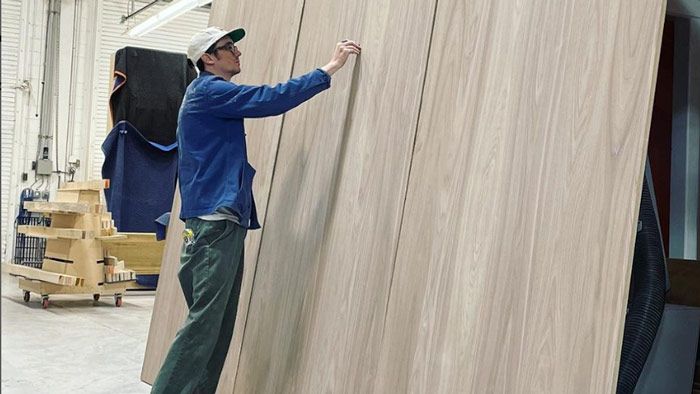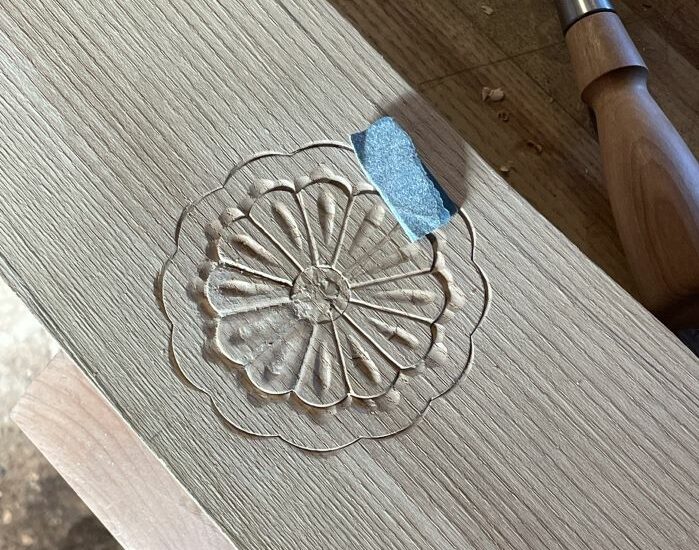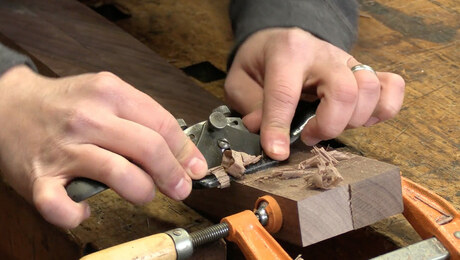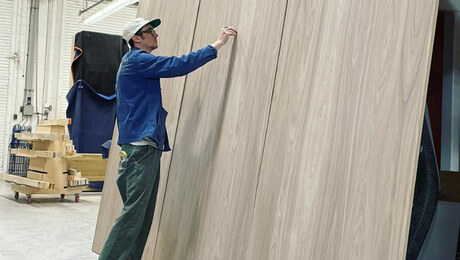Maintaining your mental flexibility – FineWoodworking

The fascinating part about woodworking is that it’s not something you can be good at overnight. It’s about the skills that you acquire through experience. The more experience you have, the better you are at pivoting when there is a mistake and, more importantly, taking from different aspects of woodworking to innovate your process.
For example, dovetails: From cutting them by hand to using a table saw and routers, people from different backgrounds have come up with many different techniques for doing the same thing. Building that skill cache is what I call mental flexibility; there is no innovation in rigidly sticking to one technique. I’m not saying that the way things were constructed initially isn’t the right way.
I know the Shakers perfected the candle stand, and I know many of those techniques from said candle stand can be transitioned into other projects. The understanding to take a skill from one project to another is peak mental flexibility.

It’s easy in woodworking, especially professionally, to get stuck in a routine. As a cabinet maker, I make a lot of rectangles—different sizes and shapes, but mostly rectangles. Square and precise, the goal is often the same. But occasionally, I need to reach deep into the skill cache to innovate a new process for something we haven’t done yet. If you remain rigid, this becomes harder and harder. There are three main ways to keep that brain working hard and make you a more versatile woodworker.
1. Collaborate
The easiest way to break out of your routine is to have someone else help you. Woodworking can be a very isolating experience. I love working with others on a project; it always brings things in a direction you didn’t expect, which is excellent for mental flexibility. The important thing is to collaborate with all different kinds of people, from mentors to new friends; perspectives can range from traditional to avant-garde based simply on your partner.

2. Get out of your comfort zone
I will use personal experience for this example. To reiterate, I’m a square maker, even and constant. That is not to say I don’t have any funky profiles or linear curves in my work, but it is a standard of consistency.
Always predictable, I often long for chaos. Hand-shaped, sculptural pieces have eluded me. “Put down the calipers and do it by eye!” is a mental stretch I have been working on, as well as letting inconsistencies in my handwork show through. (How else can you tell it’s handmade without the parts that make us human?) In my professional life, that is not often what a client would like, so alas, back to my roots. Square again.
Those first two strategies are very important, but some people might wonder how to make them happen. You might not have any friends nearby who are woodworkers. Or you might need guidance to get out of your comfort zone. Here are a few ways to go about the first two steps.
- Reach out to people online. There is a vast community of people willing to share their knowledge. Collaboration doesn’t need to be in person. I have gotten some of my favorite techniques from reaching out to strangers who are now friends.
- If you have the means, taking a class is my favorite way to expand my woodworking knowledge. You won’t just learn specific techniques (why a roughing gouge is better than a skew for specific cuts, for example), but you’ll also watch someone excellent at what they do move through a project. It’s a great learning experience.

3. Trial and error
This may be my favorite way to innovate new processes. While doing a shop task, everyone has thought “There’s gotta be a better way.” If you have that thought, I can almost guarantee there is a better way. Take the time to build a jig that you don’t have. If that doesn’t work, why didn’t it work? Keep going; there is no such thing as wasted time in the progression of your craft. It all culminates in one big brain full of the good and bad, which dictates your future projects.
-Owen Madden is a professional cabinetmaker from upstate New York who works as a shop foreman at Rowan Woodwork.
Owen’s recommended links:
FWW forum, guaranteed to get some input from your fellow woodworkers!
Dan Faia’s master class. I mean come on he’s amazing!

Ep 1: Starting with the back posts
I saw Garrett Hack give a demonstration once and I was blown away. I’m going to snoop into his tool chest.

Garrett Hack’s favorite hand planes
Sign up for eletters today and get the latest techniques and how-to from Fine Woodworking, plus special offers.




